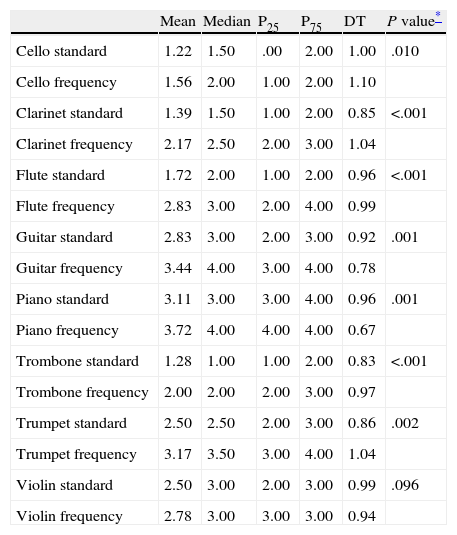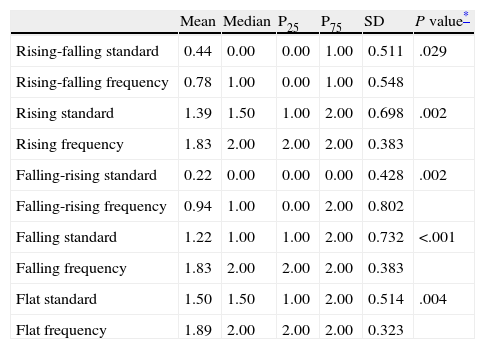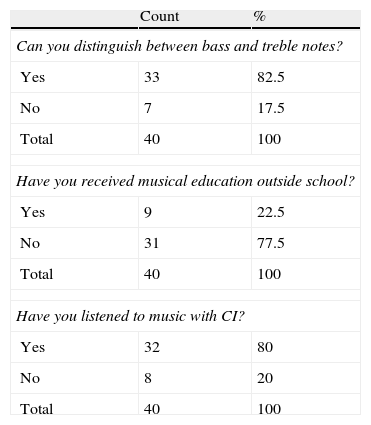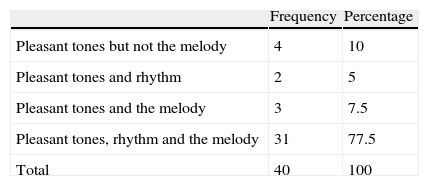Music is a universal, cross-cultural phenomenon. Perception and enjoyment of music are still not solved with current technological objectives of cochlear implants. The objective of this article was to advance the development and validation of a method of programming of cochlear implants that implements a frequency allocation strategy. We compared standard programming vs frequency programming in every subject.
MethodsWe studied a total of 40 patients with cochlear implants. Each patient was programmed with an optimal version of the standard program, using the Custom Sound Suite 3.2 cochlear platform. Speech tests in silence were performed using syllable word lists from the protocol for the assessment of hearing in the Spanish language. Patients implanted bilaterally were tested in both ears at the same time. For assessing music listening habits we used the Munich Music Questionnaire and “MACarena” (minimum auditory capability) software.
ResultsAll patients achieved better results in recognition, instrument tests and tonal scales with frequency programming (P<.005). Likewise, there were better results with frequency programming in recognising harmonics and pitch test (P<.005).
ConclusionsFrequency programming achieves better perception and recognition results in patients in comparison with standard programming. Bilateral stimulation patients have better perception of musical patterns and better performance in recognition of tonal scales, harmonics and musical instruments compared with patients with unilateral stimulation. Modification and frequency allocation during programming allows decreased levels of current intensity and increase the dynamic range, which allows mapping of each audio band less obtrusively and improves the quality of representation of the signal.
La música es un fenómeno universal y transcultural. La percepción y el disfrute de la música son objetivos aún no solucionados completamente con la tecnología actual de los implantes cocleares. El objetivo de este artículo es avanzar hacia el desarrollo y la validación de un método de programación para implantes cocleares donde se implementa una estrategia de asignación frecuencial. Se comparan la programación estándar frente a la programación de asignación frecuencial, en cada sujeto.
MétodoSe estudian cuarenta pacientes portadores de implante coclear. Se realiza ajuste y optimización del programa estándar, luego programación de asignación frecuencial utilizando Custom Sound Suite de Cochlear, versión 3.2. Para las pruebas de habla se utilizó el protocolo para la valoración de la audición en lengua española. En implantados bilaterales se exploraron ambos oídos a la vez. Para los hábitos musicales se utilizó el Cuestionario de Música de Múnich y el software “MACarena”.
ResultadosTodos los pacientes presentan mejores resultados en reconocimiento de instrumentos, escalas tonales, reconocimiento de armónicos y tono con la programación frecuencial (p<0,005).
ConclusionesLa programación frecuencial asignada a la fundamental mejora la percepción y reconocimiento musical comparada con la programación estándar. Implantados bilaterales presentan mejor percepción de patrones musicales, escalas tonales, armónicas e instrumentos. Esta forma de programación permite disminución de niveles de intensidad de corriente e incremento del rango dinámico, y esto lleva a un mapeo de cada banda de audio menos molesta mejorando la calidad de la señal.














